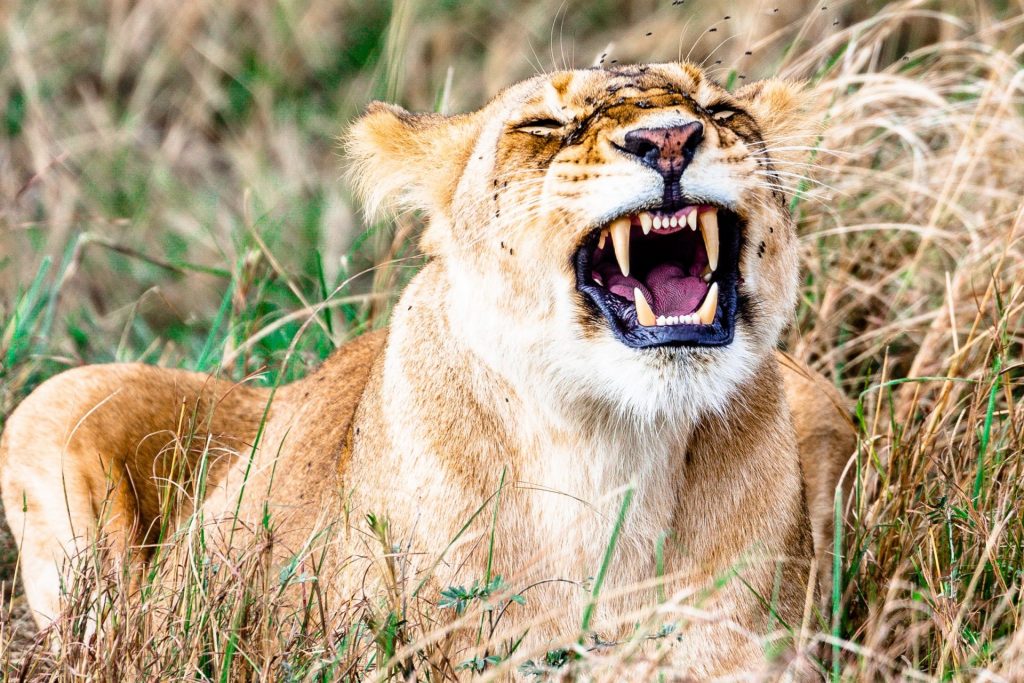We all know that animals have teeth, but did you know that some animals have some pretty crazy teeth? Needless to say, as dentists near Waretown, we have an interest in teeth. In this article, we will discuss 25 fascinating facts about animal teeth. From the kangaroo rat, which has incisors that never stop growing, to the narwhal, which has a tusk that is actually a tooth, there are plenty of interesting things to learn about animal dentition!
1. The largest teeth in the world are found on the sperm whale, and they can reach up to 17 inches long!
2. Narwhals have an iconic tusk that is actually a large tooth which can grow up to 10 feet long!
 3. Aardvarks have no upper incisors but their lower incisors can grow up to 3 inches long and they use them to dig burrows in the ground.
3. Aardvarks have no upper incisors but their lower incisors can grow up to 3 inches long and they use them to dig burrows in the ground.
4. Hippos have incredibly strong teeth; they are able to crush bones with just one bite!
5. Elephants’ molars never stop growing throughout their life, some measuring over 7 inches wide!
6. Walruses possess two sets of teeth, one for their upper jaw and another for their lower.
7. The kangaroo rat has incisors that never stop growing, which they use to cut through tough vegetation.
8. Crocodiles have up to 80 teeth in their mouths, but they lose and replace them throughout their lives!
9. Sloths can rotate each of their six lower front teeth independently so they are able to chew on leaves no matter how thick or tough they may be.
10. Koalas have sharp cheekteeth which help them grind up the tough eucalyptus leaves that make up most of its diet.
11. Pigs can have between 20-40 teeth in their mouths, and their lower teeth are particularly sharp for cutting through tough vegetation.
12. Horses have between 40-44 teeth which they use to grind down tough plants like grasses and hay.
13. Tigers have incredibly powerful jaws; each of their canines are nearly 3 inches long!
14. Sharks have multiple sets of razor-sharp teeth that they use to tear apart their prey.
15. Giraffes have molars on the top and bottom of their mouth with flat surfaces that help them grind down plant matter before swallowing it.
16. Rats have orange-colored incisors that never stop growing throughout their lifetime, which is why they continuously need to chew on hard materials such as wood or plastic to keep their teeth trimmed.
17. Rabbits have two sets of teeth, 24 incisors at the front and 16 molars in the back.
18. Snakes have up to 500 razor-sharp teeth in their mouths that are used for capturing and eating prey.
19. Humans possess 20 primary teeth which begin to appear between 6-12 months old and then another set of 32 permanent adult teeth that come in around the age of 6 or 7 years old.
20. Bats have sharp canine teeth for puncturing fruit and small insects such as mosquitoes or flies, as well as flat molars for crushing them up before swallowing them whole.
21. Ducks have a combination of both short pointed beaks and longer flat beaks which they use to catch both small prey and larger animals such as frogs or fish.
22. Seagulls have sharp hooked beaks which they use to tear apart their food before swallowing it whole.
23. Lizards have sharp pointed teeth for catching insects, as well as wide molars for crushing them up before eating.
24. Squirrels have four large incisors at the front of their mouth which are used for cutting through tough nuts and seeds.
25. Owls have razor-sharp talons on their feet and curved sharp beaks for tearing apart their prey before consumption!
BONUS: 26. Parrots have beaks that are specially adapted for cracking open nuts and seeds, as well as sharp tongue-like organs for catching insects.
From the sperm whale with its massive teeth to the kangaroo rat with ever-growing incisors, from the hippo’s strong teeth capable of crushing bones in one bite to the seagull’s hooked beak designed for tearing apart prey, teeth and beaks come in all shapes and sizes. Each species has adapted its dental structure over time in order to survive in their specific environment. Whether you’re looking at a giant elephant or a tiny mouse, the variety of mammal teeth on display is truly amazing!
Want to learn more? Visit your favorite dentists near Waretown!





